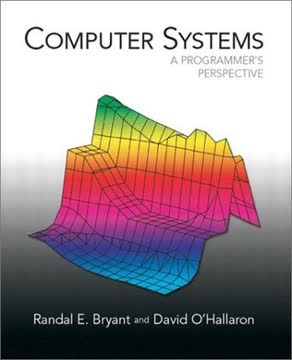Key Takeaways
1. Information is fundamentally bits plus context.
The only thing that distinguishes different data objects is the context in which we view them.
Bits need interpretation. At its core, all data within a computer system—from files on disk to programs in memory—is represented as bits (0s and 1s). The meaning of these bits is derived entirely from the context in which they are interpreted. The same sequence of bytes could represent an integer, a floating-point number, a character string, or even a machine instruction.
Context matters. This concept is crucial for programmers to understand. For example, a sequence of bytes representing a number might be treated as signed or unsigned, leading to vastly different interpretations. Similarly, the way a program handles data depends on its type, which the compiler uses to generate appropriate machine code.
Understanding representations. By understanding how different data types are represented at the bit level, programmers can write more reliable and efficient code. This knowledge helps avoid common pitfalls such as integer overflow, floating-point inaccuracies, and security vulnerabilities like buffer overflows.
2. Compilation systems translate human-readable programs into executable machine code.
On a Unix system, the translation from source file to object file is performed by a compiler driver.
From source to execution. The journey of a C program from its source code to its execution involves a series of transformations performed by the compilation system. This system typically consists of a preprocessor, compiler, assembler, and linker, each playing a vital role in converting the high-level code into low-level machine instructions.
Phases of compilation. The preprocessor handles directives like #include, the compiler translates C code into assembly language, the assembler converts assembly code into relocatable object code, and the linker combines object files and libraries to produce an executable. Each phase adds complexity and detail, moving closer to the machine's understanding.
Executable object files. The final output of the compilation system is an executable object file, which contains the machine code instructions, data, and symbol information needed to run the program. This file is then loaded into memory by the operating system and executed by the processor.
3. Understanding compilation systems aids in optimizing performance and avoiding errors.
For simple programs such as
hello.c, we can rely on the compilation system to produce correct and efficient machine code.
Compiler limitations. While modern compilers are sophisticated, they have limitations. Programmers need a basic understanding of machine-level code to make good coding decisions, such as choosing efficient data structures and algorithms.
Link-time errors. Some of the most perplexing programming errors are related to the linker, especially in large software systems. Understanding how linkers resolve references, handle static and dynamic libraries, and create position-independent code is crucial for avoiding these errors.
Security vulnerabilities. Buffer overflow vulnerabilities, a common source of security holes, arise from a lack of understanding of how data and control information are stored on the program stack. Programmers need to understand these concepts to write secure code.
4. Processors execute instructions stored in memory, managed by the operating system.
At its core is a word-size storage device (or register) called the program counter (PC).
The CPU's role. The central processing unit (CPU) is the engine that interprets and executes instructions stored in main memory. It operates by repeatedly fetching instructions, interpreting them, and performing simple operations on data.
Hardware organization. The CPU interacts with main memory, I/O devices, and other components through a system of buses. The register file, a small storage device within the CPU, holds frequently accessed data. The arithmetic/logic unit (ALU) performs arithmetic and logical operations.
Instruction execution. The CPU follows a simple instruction execution model, defined by its instruction set architecture (ISA). Instructions are executed in strict sequence, involving steps such as loading data, storing data, operating on data, and jumping to different instructions.
5. Cache memories are essential for bridging the processor-memory speed gap.
To deal with the processor-memory gap, system designers include smaller, faster storage devices called cache memories (or simply caches) that serve as temporary staging areas for information that the processor is likely to need in the near future.
The processor-memory gap. Due to physical laws, larger storage devices are slower than smaller storage devices. Faster devices are more expensive to build than their slower counterparts. This creates a significant gap between processor speed and memory access time.
Cache hierarchy. To bridge this gap, system designers use a hierarchy of storage devices called cache memories. Smaller, faster caches (L1, L2, L3) store frequently accessed data, allowing the processor to access them quickly.
Locality. Caching is made possible by locality, the tendency for programs to access data and code in localized regions. By exploiting temporal and spatial locality, caches can significantly improve program performance.
6. Storage devices are organized in a hierarchy based on speed, cost, and capacity.
As we move from the top of the hierarchy to the bottom, the devices become slower, larger, and less costly per byte.
The memory hierarchy. Computer systems organize storage devices into a hierarchy, with faster, smaller, and more expensive devices at the top and slower, larger, and less expensive devices at the bottom. This hierarchy includes registers, caches, main memory, solid-state disks, and rotating disks.
Caching at each level. Each level in the hierarchy serves as a cache for the next lower level. The register file caches data from the L1 cache, the L1 cache caches data from the L2 cache, and so on.
Exploiting the hierarchy. Programmers can improve performance by understanding and exploiting the memory hierarchy. This involves writing code that exhibits good locality and minimizing the number of accesses to slower storage devices.
7. The operating system manages hardware resources through abstractions like processes, virtual memory, and files.
We can think of the operating system as a layer of software interposed between the application program and the hardware.
Abstraction layer. The operating system (OS) acts as an intermediary between application programs and the hardware. It protects the hardware from misuse and provides applications with simple, uniform mechanisms for manipulating complex hardware devices.
Key abstractions. The OS achieves its goals through three fundamental abstractions: processes, virtual memory, and files. Processes provide the illusion of exclusive use of the processor, main memory, and I/O devices. Virtual memory provides the illusion of exclusive use of main memory. Files provide a uniform view of all I/O devices.
Kernel's role. The OS kernel manages these abstractions, handling context switches between processes, translating virtual addresses to physical addresses, and providing a uniform interface for accessing I/O devices.
8. Systems communicate with other systems using networks, viewed as I/O devices.
When the system copies a sequence of bytes from main memory to the network adapter, the data flow across the network to another machine, instead of, say, to a local disk drive.
Networks as I/O devices. From the perspective of an individual system, a network can be viewed as just another I/O device. Data can be copied from main memory to the network adapter for transmission to other machines.
Client-server model. Network applications are based on the client-server model, where clients request services from servers. This model relies on the ability to copy information over a network.
Telnet example. The telnet application demonstrates how a network can be used to run programs remotely. The telnet client sends commands to the telnet server, which executes the commands and sends the output back to the client.
9. Amdahl's Law dictates the limits of performance improvement from optimizing a single component.
The main idea is that when we speed up one part of a system, the effect on the overall system performance depends on both how significant this part was and how much it sped up.
Diminishing returns. Amdahl's Law states that the overall speedup of a system is limited by the fraction of time that the improved component is used. Even if we make a significant improvement to a major part of the system, the net speedup will be less than the speedup for the one part.
Focus on the big picture. To significantly speed up the entire system, we must improve the speed of a very large fraction of the overall system. This requires identifying and optimizing the most time-consuming components.
General principle. Amdahl's Law is a general principle for improving any process, not just computer systems. It can guide efforts to reduce manufacturing costs or improve academic performance.
10. Concurrency and parallelism enhance system performance at multiple levels.
We use the term concurrency to refer to the general concept of a system with multiple, simultaneous activities, and the term parallelism to refer to the use of concurrency to make a system run faster.
Concurrency vs. Parallelism. Concurrency refers to the general concept of multiple, simultaneous activities in a system. Parallelism refers to the use of concurrency to make a system run faster.
Levels of Parallelism:
- Thread-Level Concurrency: Achieved through multiple processes or threads, enabling multiple users or tasks to run simultaneously.
- Instruction-Level Parallelism: Modern processors execute multiple instructions at once, improving performance.
- SIMD Parallelism: Single instructions operate on multiple data points simultaneously, speeding up image, sound, and video processing.
Multiprocessor systems. Multiprocessor systems, including multi-core processors and hyperthreading, allow for true parallel execution, improving system performance by reducing the need to simulate concurrency.
11. Abstractions are crucial for managing complexity in computer systems.
The use of abstractions is one of the most important concepts in computer science.
Simplifying complexity. Abstractions provide simplified views of complex systems, allowing programmers to use code without delving into its inner workings. This is a key aspect of good programming practice.
Examples of abstractions:
- Instruction Set Architecture (ISA): Provides an abstraction of the processor hardware.
- Operating System: Provides abstractions for I/O devices (files), program memory (virtual memory), and running programs (processes).
- Virtual Machines: Provides an abstraction of the entire computer, including the OS, processor, and programs.
Benefits of abstractions. Abstractions enable programmers to write code that is portable, reliable, and efficient, without needing to understand the underlying hardware and software in detail.
12. Number representation impacts program reliability and security.
Having a solid understanding of computer arithmetic is critical to writing reliable programs.
Finite approximations. Computer representations of numbers are finite approximations of integers and real numbers. This can lead to unexpected behavior, such as arithmetic overflow and floating-point inaccuracies.
Integer representations. Unsigned encodings represent nonnegative numbers, while two's-complement encodings represent signed integers. Understanding the properties of these representations is crucial for writing reliable code.
Floating-point representations. IEEE floating-point format is a base-2 version of scientific notation for representing real numbers. Understanding how floating-point numbers are represented and manipulated is essential for avoiding errors in numerical computations.
Last updated:
FAQ
What is "Computer Systems: A Programmer's Perspective" by Randal E. Bryant about?
- Comprehensive systems overview: The book offers a deep dive into how computer systems work from a programmer’s perspective, covering hardware, operating systems, compilers, and networking.
- Bridging hardware and software: It explains how software maps onto hardware, demystifying the execution of programs at the machine level.
- Practical focus: Through real code examples and hands-on labs, it teaches how system-level details impact program correctness, performance, and security.
- Holistic approach: Unlike many texts, it unifies all major system components to help programmers understand the full stack.
Why should I read "Computer Systems: A Programmer's Perspective" by Randal E. Bryant and David R. O'Hallaron?
- Become a power programmer: The book equips readers with rare skills to understand and debug systems "under the hood," leading to more efficient, reliable, and secure code.
- Bridges theory and practice: It connects low-level system concepts with high-level programming, making complex topics accessible and actionable.
- Preparation for advanced topics: The material lays a solid foundation for further study in compilers, operating systems, architecture, networking, and cybersecurity.
- Authoritative and widely used: Written by leading experts, it is a trusted resource in both academia and industry.
What are the key takeaways from "Computer Systems: A Programmer's Perspective"?
- Systems thinking for programmers: Understanding system internals helps write better, faster, and safer programs.
- Impact of hardware on software: The book shows how hardware features like caches, pipelines, and memory hierarchies affect program performance.
- Security awareness: It highlights common vulnerabilities such as buffer overflows and teaches how to avoid them.
- Hands-on learning: Practice problems, labs, and real-world examples reinforce theoretical concepts.
What are the best quotes from "Computer Systems: A Programmer's Perspective" and what do they mean?
- "All information in a system is represented as bits, and the meaning depends on context." This emphasizes the importance of understanding data representation for correct and efficient programming.
- "Most execution time is spent in core loops; optimize these for cache performance." This highlights the practical impact of memory hierarchy and locality on real-world program speed.
- "The processor need not implement the ISA sequentially; hardware can exploit parallelism while preserving ISA semantics." This quote underlines the abstraction provided by ISAs and the power of hardware-level optimizations.
- "Handlers should be minimal, often just setting flags and returning quickly to avoid concurrency issues." This advice is crucial for writing safe and reliable signal handlers in concurrent systems.
How does "Computer Systems: A Programmer's Perspective" by Bryant explain data representation and manipulation in computer systems?
- Bits and context: The book teaches that all data—integers, floating-point numbers, characters, instructions—are just bits whose meaning depends on context.
- Integer and floating-point formats: It covers two's-complement for signed integers, unsigned integers, and IEEE 754 floating-point formats, including normalized and denormalized numbers.
- Bit-level operations: Boolean algebra, bit masking, shifting, and arithmetic at the bit level are explained for low-level programming and understanding compiler output.
- Data alignment and endianness: The text discusses how data is aligned in memory and the impact of byte ordering on program behavior.
What does "Computer Systems: A Programmer's Perspective" teach about the relationship between C code, assembly, and machine code?
- Compilation stages: The book details the journey from C source code through preprocessing, assembly, object code, and linking to executable machine code.
- Assembly code analysis: It shows how high-level constructs like loops and function calls are translated into machine instructions, teaching readers to read and reason about assembly.
- Reverse engineering: Readers learn to map assembly instructions back to C code, gaining insight into compiler optimizations and hardware operations.
- Security implications: Understanding this mapping helps identify vulnerabilities such as buffer overflows.
How does "Computer Systems: A Programmer's Perspective" by Bryant and O'Hallaron explain processor architecture and pipelining?
- Y86-64 as a teaching tool: The book introduces a simplified instruction set architecture to clarify processor design concepts without the complexity of x86-64.
- Pipeline stages: It explains the six-stage pipeline (Fetch, Decode, Execute, Memory, Write-back, PC Update) and how instructions flow through hardware.
- Hazard management: Data and control hazards are addressed with techniques like forwarding, stalling, and branch prediction.
- Performance considerations: The text discusses clock cycle limitations, pipeline overhead, and the trade-offs of deep pipelines.
What optimization techniques and performance advice does "Computer Systems: A Programmer's Perspective" provide for programmers?
- Algorithm and data structure choice: The book stresses the importance of high-level design to avoid asymptotic inefficiencies.
- Code transformations: Techniques like loop unrolling, multiple accumulators, and reassociation are recommended to exploit instruction-level parallelism.
- Cache-friendly coding: Maximizing spatial and temporal locality in inner loops is emphasized for better cache performance.
- Profiling and bottleneck identification: Tools like GPROF are suggested to focus optimization efforts where they matter most.
How does "Computer Systems: A Programmer's Perspective" by Bryant describe the memory hierarchy and its impact on program performance?
- Hierarchy structure: The book explains the organization from CPU registers to caches, main memory, and disk, each with different speed, size, and cost.
- Locality principle: Temporal and spatial locality are key to writing programs that make effective use of caches.
- Memory mountain visualization: A unique "memory mountain" graph illustrates how locality affects memory throughput and guides efficient coding.
- Caching mechanism: The text details how each level caches data from the next, with hits and misses determining access speed.
What operating system concepts are covered in "Computer Systems: A Programmer's Perspective" by Bryant and O'Hallaron?
- Processes and threads: The book explains process abstraction, context switching, and the use of threads for concurrency and parallelism.
- Virtual memory: It covers address translation, page tables, TLBs, and memory protection, showing how each process gets its own address space.
- Files and I/O: Unix I/O, file descriptors, and device abstractions are introduced, preparing readers for system-level and network programming.
- Exceptional control flow: The text discusses interrupts, traps, faults, and signals, and their role in process management and system calls.
How does "Computer Systems: A Programmer's Perspective" by Bryant and O'Hallaron explain concurrency, threads, and synchronization?
- Concurrency models: The book compares processes, I/O multiplexing, and threads, explaining their trade-offs in isolation, communication, and performance.
- Thread creation and management: It covers thread creation, termination, and synchronization, including mutexes and semaphores.
- Race conditions and deadlocks: Common concurrency bugs are illustrated, with advice on avoiding races and deadlocks through careful synchronization and lock ordering.
- Thread safety and reentrancy: The text distinguishes between thread-safe and reentrant functions, offering practical techniques for writing safe concurrent code.
What does "Computer Systems: A Programmer's Perspective" by Bryant teach about network programming and the client-server model?
- Sockets interface: The book introduces the sockets API for network communication, detailing socket creation, connection, binding, listening, and accepting.
- Client-server transactions: It defines the model as clients sending requests and servers responding, emphasizing that clients and servers are processes, not machines.
- Concurrent servers: Techniques for building concurrent network servers using processes, threads, or I/O multiplexing are explained, with practical examples like a simple web server.
- Robust I/O: The RIO package is introduced to handle short counts and buffering issues, improving reliability in network and file I/O.
How does "Computer Systems: A Programmer's Perspective" by Bryant and O'Hallaron address security vulnerabilities and defensive programming?
- Buffer overflows: The book illustrates how out-of-bounds memory writes can corrupt stack state, leading to crashes or exploits.
- Attack mechanisms: It explains how attackers exploit buffer overflows to inject and execute malicious code by overwriting return addresses.
- Defensive techniques: Modern defenses such as stack randomization (ASLR), stack canaries, and non-executable stack regions are covered.
- Secure coding practices: The text emphasizes understanding system internals to write code that avoids common vulnerabilities and withstands attacks.
Review Summary
Computer Systems: A Programmer's Perspective is highly regarded for its comprehensive and clear explanations of computer systems concepts. Readers praise its practical approach, use of C examples, and coverage of topics like memory hierarchy and virtual memory. Many consider it essential reading for computer science students and professionals. The book is lauded for its ability to bridge theoretical concepts with real-world applications. While some find it challenging, most reviewers appreciate its depth and clarity. A few criticisms mention outdated information and potential issues with undefined behavior in code examples.
Similar Books
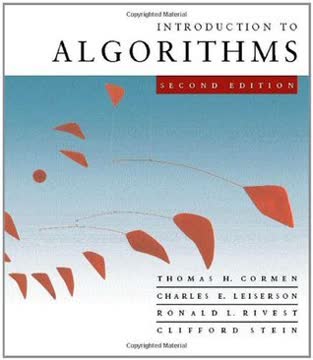
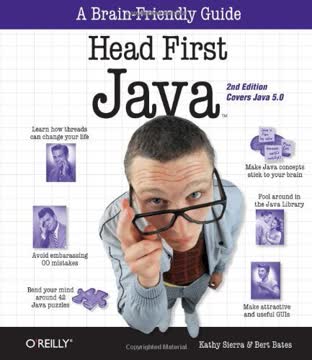


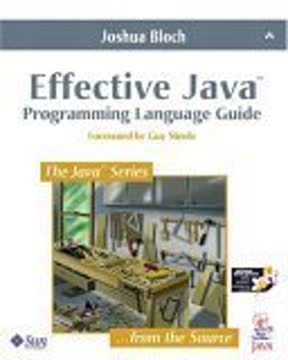
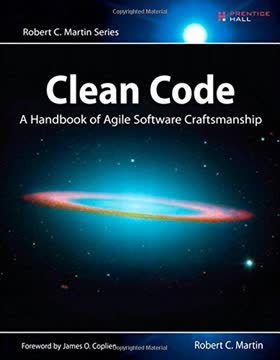
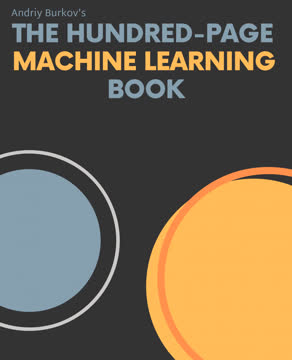
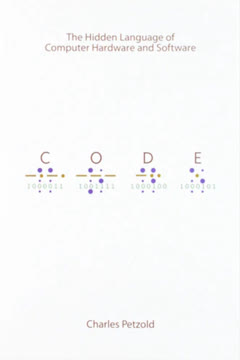
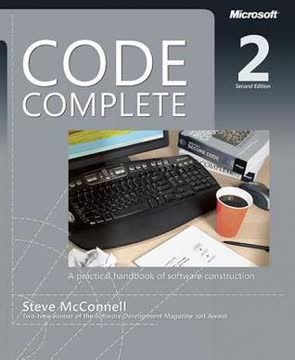
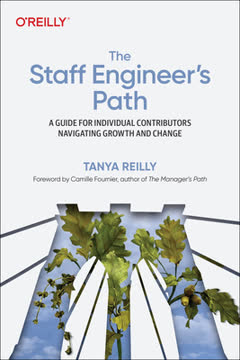
Download PDF
Download EPUB
.epub digital book format is ideal for reading ebooks on phones, tablets, and e-readers.
